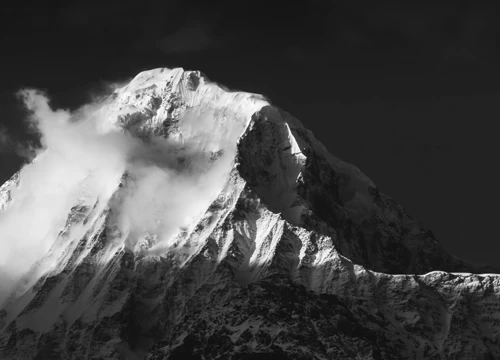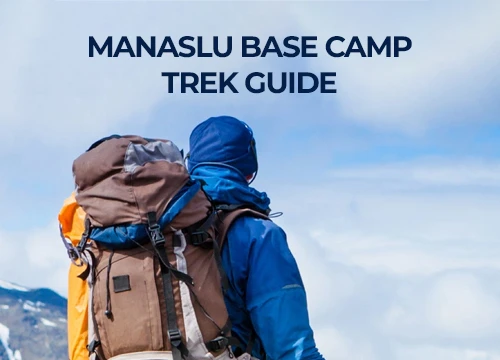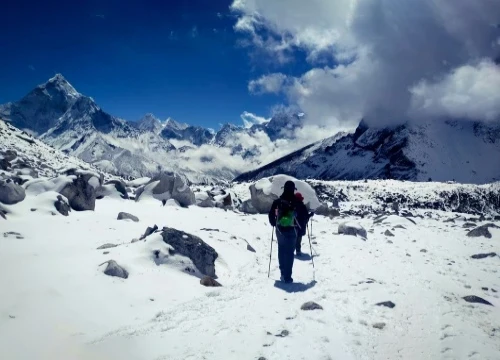Weather of Annapurna base camp
The weather conditions for the Annapurna base camp trek can vary depending on the season. The best times to trek in this region are spring and autumn, when the landscape is lush and green, and the trail is adorned with colorful flowers. However, the trails can be icy and slippery in winter, so it is important to prepare adequately. The best way to avoid injury is by training for the trek beforehand. This will help you to improve your balance and reduce the risk of knee pain. It is also a good idea to bring warm clothing and a sleeping bag to keep you comfortable during the night.
The most popular months to trek in the Annapurna base camp during the spring – March, April and May, and the autumn – late September, October, November, and early December. These are the best times to enjoy the spectacular vistas and vibrant cultural atmosphere of Nepal. However, they can also be more crowded with other trekkers than other seasons of the year. If you’re looking for a less-crowded and more challenging experience, consider trekking to the Annapurna’s in winter. This is a difficult time to trek, but it’s worth the challenge!
In January, you’ll find beautiful snow-capped mountains in the Annapurna region. The weather is usually clear during the day, but there can be some rain at lower elevations. You’ll need to be prepared for all weather conditions, and it’s a good idea to bring sleeping bag and high-quality warm clothes.
In May, the weather is a little warmer than in the fall and the air is calm. It’s also the final month before the monsoon season arrives, so it’s a great time to see some of the country’s most stunning scenery. It’s a perfect choice for trekkers who want to experience the beauty of Nepal without having to deal with heavy crowds.
Best Trekking time for Annapurna base camp
The trek to Annapurna Base Camp is a difficult trek that requires physical strength, stamina and endurance. The trek also requires you to be able to handle the daily challenges of a Himalayan trek. It is recommended that you start training and building up your strength and stamina before you embark on this adventure. This will allow you to enjoy the trekking experience without suffering from any problems.
The best time to trek in Nepal is from autumn (September, October, November) and spring (March, April, May). These seasons have calm weather and offer good views of the mountains. There is also less heat haze, and the sun shines more frequently in these months.
It is important to take a slow pace and to rest often. This will help you avoid altitude sickness and allow your body to acclimatize to the higher elevations. Also, it is essential to make sure that you have enough food and water to last the entire trek. You can purchase food along the way at tea houses, but be sure to bring some extra snacks in case you get hungry.
In addition to the rocky and muddy trails, the trek will also require you to cross several rivers. This can be a challenging task for the unprepared hiker, but if you prepare well enough, it will be much easier. Additionally, it is important to wear proper footwear and carry a waterproof backpack.
As you walk, you will see a variety of landscapes, from low warm farmland and villages to green hills covered in lovely dense forests. Eventually, you will reach the snowy mountains at higher altitudes. These areas are rich in wildlife, including the Himalayan wolf and the langur monkey.
The trek can be a bit grueling, but it is worth the effort! The views of the mountains are spectacular, and the trip will be one you will never forget. It is recommended that you hire a guide and porters to assist you during the trek. These people will be able to guide you and keep you safe. They will also help you with the heavy burden of your backpack.
Trekking difficulty rated of Annapurna base camp trek
The Annapurna Base Camp trek is an exhilarating adventure that requires proper preparation. The route has steep steps and is surrounded by snowy mountains. You should train for this trek by doing physical exercises and increasing your stamina. Some of these activities include running, hiking, swimming, and long hour walks. It is also advisable to carry your own water bottle, as you’ll be required to walk for a long duration and the price of bottled water is high in high regions.
The pristine landscape of the Himalayas will take your breath away. The snow-covered peaks and the beautiful green hills are a sight to see. It is best to take it slow, as the altitude is quite high and you may experience altitude sickness. You can combat this problem by acclimatizing and eating well. If you are not acclimatized, you may suffer from symptoms such as dizziness and headaches.
During the trek, you will pass through several villages and natural settings. Some of them are so beautiful that you’ll never forget them. Some of the trekking routes are even covered with rhododendrons and oak trees, which will add to the beauty of your trip.
Another challenge of the trek is that it takes a lot of time to complete it. The average trekking time is seven days, but you can also make it shorter by taking a flight from Kathmandu to Pokhara and drving to Nayapul. This option will cost you more money but will give you a better view of the Himalayas.
While the trekking experience in Nepal is exciting, it can also be dangerous if you’re not prepared. You must prepare physically and mentally for the trek, and you should also learn how to read a map and use a compass. You can also hire a guide to help you with the trip.
Whether you choose to trek by yourself or with a guide, this is an incredible experience that’s sure to leave you with lasting memories. During the trek, you’ll have the opportunity to meet locals and see their lives in a different way. You’ll also be able to explore mountain ranges that are otherwise inaccessible.
Accommodation at Annapurna base camp trek
The accommodations on the Annapurna Base Camp trek vary from tea house to tea house, but all offer basic amenities and a place to sleep. The rooms are small and simple, with two to eight beds per room. They may not be the most comfortable beds in the world, but they are more than adequate for a good night’s rest. You can also expect to share a bathroom with other guests, so be prepared for a little discomfort.
The tea houses provide simple meals and accommodation, and are run by locals. They serve local Nepalese food as well as international dishes. During the high seasons, such as spring and autumn, these hotels can be quite full, so you should reserve in advance. However, during the winter months, the lodges are much less crowded and there is ample space to accommodate you.
A good number of physical stamina is required for the trek, and it’s recommended that you wear appropriate clothing and footwear. Also, be sure to pack enough water and food. If you are not in the best of physical shape, it’s recommended that you start an exercise regimen before the trip. Also, acclimatize to the altitude by drinking plenty of water and taking a day to rest before the trek.
Conclusion from holiday tours Nepal for Annapurna base camp trek
The best time to trek Annapurna is in the spring and fall, when the weather is clear and dry. The winter months can be chilly, and it’s important to prepare for snowy conditions by wearing warm clothing. If you’re not acclimatized to the high altitude, you can experience symptoms of altitude sickness. This can include headache, nausea, and vertigo. It’s important to take precautionary measures to avoid these symptoms, such as avoiding alcohol and caffeine, eating food that is rich in potassium, and consuming plenty of water. You can also take medications to help alleviate the symptoms. Lastly, don’t forget to bring a good pair of hiking boots and a backpack with extra storage for snacks and toiletries. If you’re planning to hike the Annapurna Base Camp Trek, it’s a great idea to consult with a professional guide before attempting the trek.





